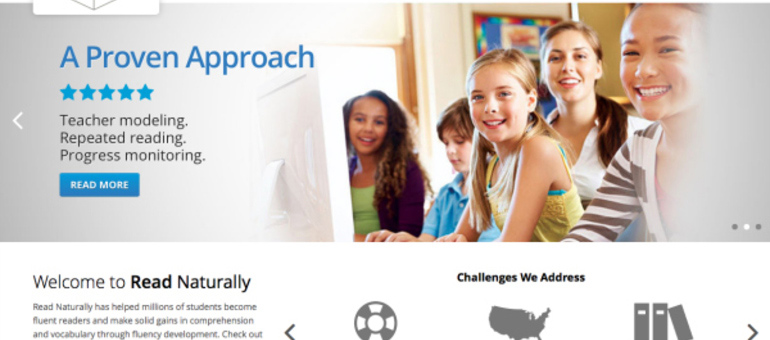Make the most of your Read Naturally program by attending one of our Summer Seminars. These seminars are held throughout the country all summer long and are hosted by the nation's top Read Naturally experts. You will learn crucial information on how to start a new Read Naturally program or maximize the benefits of your existing program, and you'll receive an abundance of training materials and tips.
Read more We hope your students spend the upcoming summer break running around playgrounds, catching fireflies, and having plenty of fun. We also hope they maintain the reading skills they’ve worked so hard to develop this year. Is there a way to combine having fun with continuing to build reading...
Read more When Andrea Peterson realized her son George was struggling with phonemic awareness, she asked the question any mother would ask: “How can I help him?” Speech therapists told her to “just be his mom” and leave the rest to the professionals. As an educator with a background...
Read more You’re browsing the shelves of your favorite bookstore. Book spines of various sizes and colors flank a book whose cover is facing outward, looking you squarely in the eye. Not surprisingly, this is the book that interests you. Someone has clearly decided it’s special. Which...
Read more Automated spell-check. Without it, I’d need to be more conscientious about spelling words like conscientious correctly. But if my computer can spell it for me, why would I need to learn to spell conscientious myself? In the age of automated spell-check, teachers may wonder if...
Read more The Read Naturally strategy delivers remarkable results when used correctly. Numerous studies have proven this fact, and countless teachers observe it every day. If you’re using the Read Naturally strategy and not getting the results you hope for, one simple change will often do the trick:...
Read more Check it out! We completely revamped our website, www.readnaturally.com . You’ll immediately notice a fresh new look and easy-to-navigate homepage. But that’s far from all. Our goal was to make each page on our site more user-friendly and informative. We streamlined, organized,...
Read more Spring conferences are fast approaching! As you share your students’ fluency progress with their parents/guardians, point out the ways they can support this progress at home. Consider offering our “fluency at home” letter, which explains to parents how they can use teacher modeling, repeated reading, and progress monitoring at home.
Read more This time of year can find many students lacking in motivation. Thankfully, there are many simple ways to spice up your Read Live or Encore program to keep your students engaged.
One easy way to give students a motivation boost is to have them track the number of stories they complete each week. As they try to match or beat their score from the previous week, students are incentivized to put forth their best effort each day.
Read more Are you looking for a way to quickly and accurately assess your students’ phonics abilities? Look no further than Read Naturally’s Quick Phonics Screener (QPS).
Teachers consistently report that QPS provides highly valuable information through an easy and efficient process. This criterion-referenced assessment is appropriate for kindergartners, adult learners, and all students in between.
Read more 



 Share your student’s success story—nominate him or her for our Star of the Month award. Win a Barnes & Noble gift card for the student and a Read Naturally gift certificate for your class!
Share your student’s success story—nominate him or her for our Star of the Month award. Win a Barnes & Noble gift card for the student and a Read Naturally gift certificate for your class!